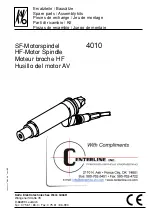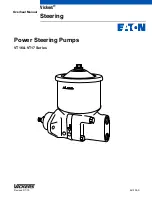
U.S.
Solid® • USS-DBS Models • All Rights Reserved • Page 13
U.S.
Solid®
• 1200 E.55th Unit C, Cleveland, OH, 44103 • www.ussolid.com
U.S.
Solid® • USS-DBS Models • All Rights Reserved • Page 6
U.S.
Solid®
• 1200 E.55th Unit C, Cleveland, OH, 44103 • www.ussolid.com
1. Place oil press on solid level table.
2. Install hopper according to Figure 2. Place the oil cup below the oil outlet
and prepare container for slag.
3. Plug in power supply that corresponds to the socket on the machine.
4. Installation is complete.
Manufacturer tests machine before shipping and then thoroughly cleans the
item. When cleaning yourself, be sure to avoid abrasive materials (toothpaste,
etc.), acid, and alkaline liquid (such as soda water). After cleaning, please
be sure that pressing chamber and screw are totally dry. Moisture can make
material stick on the screw and produce a metal friction noise.
IV. Installation
V. Operating the Machine
The oil press can do two types of pressing: hot pressing and cold pressing.
Before beginning this process, user must make sure raw materials are dry
enough for use. For highest quality oil, only high quality, fresh raw materials
should be used for pressing.
Cold Pressing
If the materials are sufficiently dry, they do not need to be heated. Preheat the
machine for at least 20 minutes, though more time may be necessary in the
winter. Directly put the raw materials in the hopper.
Hot Pressing
Preheat machine for at least 20 minutes. Heat seeds starting with 5-7 ounces
at a time and blot dry before adding to the hopper. Do not allow seeds to cool
as this will create more slag and possibly cause a blockage in the pressing
chamber.
Note: The aim of heating is to remove excess water and improve the concen-
tration oil. Begin pressing after the raw materials are well heated. If the seeds
are overheated,a paste or powder will come out, and the pressing chamber
will make a friction noise.
Walnut Kernels
Put walnut kernels into a cloth bag and slightly crack them with a wooden
mallet into pieces the size of a regular peanut kernel. Since walnut kernels
contain lots of oil but few fibers, they are not that easy to press. Make sure
to add a few soybeans while pressing walnut kernels. The amount you add
should be based on getting a normal amount of slag. To get better oil, heat
walnut kernels with moderate heat using the microwave oven for 2-3 minutes,
or heat them for 10 minutes using the oven but only turning on the upper
heating element at the temperature of 215 °F before pressing.
Good walnuts should be dark in color. Avoid walnuts that have been bleached
and seem overly clean. Bleached walnuts may contain chemicals or preserva-
tives and should not be used for oil pressing. Pick walnuts with a dark color
and heavier weight for the best results in oil pressing.
It is suggested that you try a small amount first and then buy more if they’re
good. Store the newly pressed walnut oil at room temperature for 24 hours. If
the oil separates and subsides, the walnuts were good ones. If the oil fails to
separate and subside after four or five days, change the raw material and try
again.
Okra Seeds
Select mature and high-quality okra seeds for pressing. Okra seeds are differ-
ent from other oil plants because their shells are thick and hard. Make sure to
heat them on a low heat setting in the oven, or by using the microwave oven
for 2-3 minutes till they turn soft before pressing. If the shells are already off,
add a few soybeans to the okra seeds. The amount you add should be based
on getting a normal amount of slag.
Pumpkin Seeds
Select plump and mature pumpkin seeds in small and medium sizes (it’s hard
to press very big ones). You may press them cold or after heating, depending
upon your preference.
Sunflower Seeds
The best sunflower seeds for oil are small and black and contain a lot of oil.
They can be pressed either unshelled or shelled. More oil can be pressed if
sunflower seeds are heated before pressing. Please refer to the steps to press
peanuts.




























